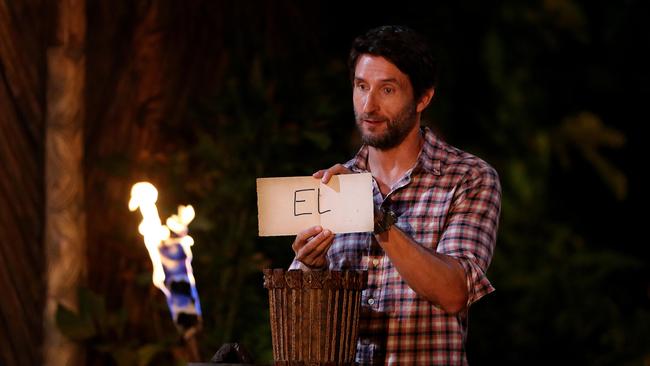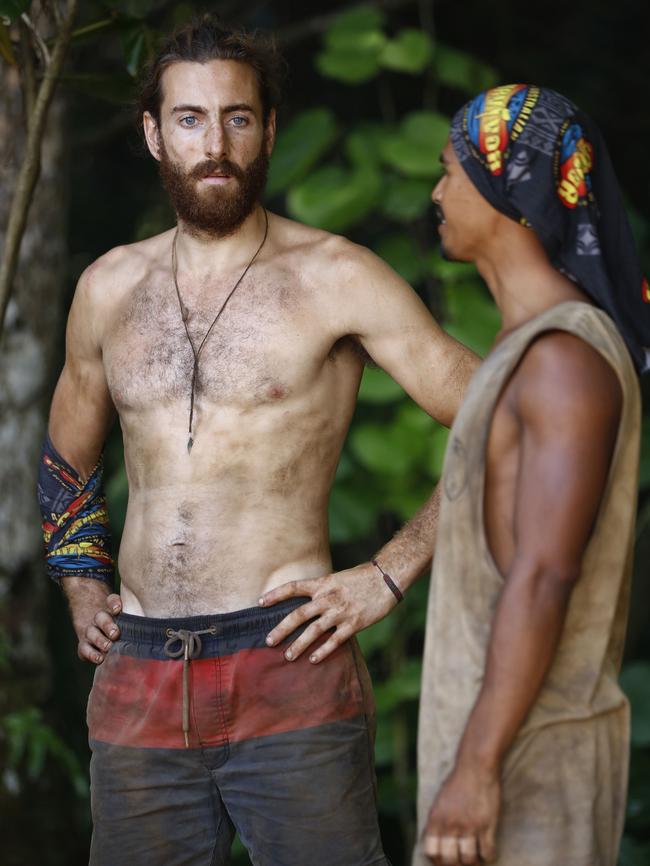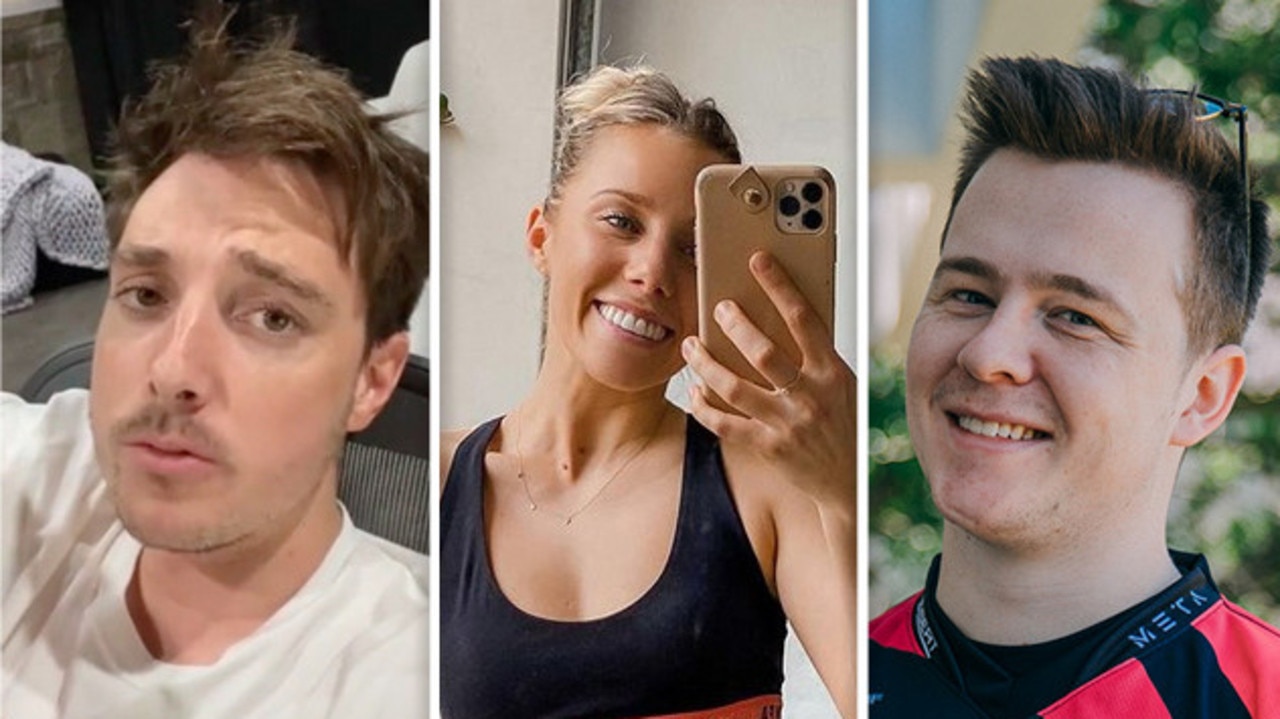Jungle rumble; the secret of Survivor’s success
THE Aussie version of the reality juggernaut is bigger and better than the American, writes Mercedes Maguire.
Confidential
Don't miss out on the headlines from Confidential. Followed categories will be added to My News.
A mother, a nanny, a flight attendant and an advertising consultant - they are the everyday Australians who got the unique opportunity to be on one of the world’s longest running reality TV shows. But the final four contestants of the successful second season of Australian Survivor didn’t take the lying, cheating and scheming off the island when the game ended.
While the title of sole Survivor and the winner of the $500,000 prize money won’t be revealed until Tuesday night’s live finale, the hopefuls who made it to the end - Jericho, Tara, Peter and Michelle - have already returned to their regular lives.
“I was back to making lunches and doing the school drop off the day after I got back,” Tara Pitt, a 32-year-old mother of three from the Sunshine Coast tells BW Magazine. “It just felt natural for me to continue on with what I know and get the kids back to normality.”

Jericho Malabonga, a 25-year-old international flight attendant from Melbourne says: “I forced myself to return to work almost straight away otherwise it would have been too difficult to get back into a normal routine. I went back two days after I returned from Samoa.”
Michelle Dougan, a 33-year-old nanny from Sydney’s eastern suburbs, who quit her job to go on Survivor, is back in her old role on a casual basis. And 22-year-old Peter Conte from Sydney, who’s job in digital advertising was made redundant while he was on Survivor, has returned to a similar position.
While reality TV has launched many a celebrity, the Survivor four are happy to simply enjoy the spoils of their time on television.
“I’m not looking to use (Survivor) as a vehicle to change my life, I don’t want to be on Home and Away or anything,” Tara says. “I don’t mind the attention, I have been getting an enormous amount of support from mums who say ‘you’re making me get off the couch and want to apply for next season.’ I tell them to go for it, just do it.”
Peter, a 22-year-old digital advertising manager adds: “My favourite thing to do is go on Twitter and find hate comments (about me) and post love comments and see it go off,” he laughs. But Jericho is more philosophical about his experience. “You can’t expect Survivor to be something that will open big doors,” he says “It was a massive chapter for me, but you have to go back to reality. I enjoyed my experience and I don’t want to ruin that by having big expectations.”

Castaway Productions, the franchise owners of Survivor, has praised the Australian series as an ideal version of the reality juggernaut, which is made in around 50 different regions around the world. “Castaway are holding up the Australian series as an example of best practise,” says Stephen Tate, head of entertainment and factual programming at Ten. “They can see we have chosen an extraordinary location and assembled the best cast. This season attracted the biggest number of applications Ten has ever seen for a reality show with more than 22,000 people applying to go on the show.
“CBS, who air Survivor in the US, have also been very complimentary, allowing us to use the official theme music and organising for (Aussie host) Jonathan LaPaglia to meet (US host) Jeff probst.”
Tate says there was no pressure from Castaway to stick with a similar format as the US, but as Australian audiences are so familiar with the US series, he says they wanted to go with a proven formula.
LaPaglia recently learned just how committed and loyal Aussie fans of the US Survivor format are.
“As an actor I wanted to make it completely my own, or even just tweak it a bit” the 48-year-old actor-turned-host says. “There are a handful of catchphrases Probst says that are synonymous with Survivor, like ‘the tribe has spoken’ and ‘I’ll go tally the votes.’ So I decided to say ‘I’ll go count the votes’ instead and there was so much online chatter over that one word change. So I started to alternate it, sometimes I’d say ‘count’ and sometimes ‘tally’ but in the end the editors changed it to ‘count’ regardless of what I said.


“It shows the fans are incredibly loyal, to the point of obsessive, they’re students of the game.”
While base ratings for Australian Survivor (an average 780,000 per episode) don’t compare to those of main competitors The Block on Nine wich can surpass 1 million per episode, Tate says viewers watching Survivor through catch-up services and online have boosted traditional numbers by up to 21 per cent.
“It’s almost criminal Australian Survivor is not getting the viewers it deserves,” Steve Molk of deciderTV.com says. “Ten is giving it a red hot go and producing a show that is beautifully shot and just as sleek as the US version.
“Part of the reason why it’s so good is that Ten got into bed with Castaway Productions and so took on a lot of what was successful about the US version. Australian Survivor have also returned to Samoa for season two, which is where the last season of the US version was also filmed, and so they got a massive location benefit and were able to liaise with the US challenge team etc. And it’s showing, the calibre of the Australian version is top notch.”
LaPaglia admits he doubted the Australian production could match their American counterpart at first. But he now readily admits they’ve made it as good, if not better.
“In America they have four times the budget and double the crew, but we make it look expensive because the shots of the island are almost cinematic,” LaPaglia says. “I admit I questioned how they were going to make it bigger and better than the US, but they have pulled it off.”



Tate adds they may not have strayed far from the American version, but a cast of Aussie characters has made this season compelling.
“By casting Australians we make it our own,” Tate says. “What it immediately does is bring the concept of mateship into the game, which creates conflict among the players. The concept of having to blindside a mate goes against the grain for most Australians and that makes it compelling.”
Casting Michelle, a 33-year-old from the eastern suburbs who says she prepared for life at camp by sleeping on her trampoline one night, seems like an inspired choice. But the pretty blonde, whose game play was to never be thought of as a threat, has surprised even herself by getting to the final four.
“I thought I was going to be Brooke Shields on Blue Lagoon,” she laughs. “I thought I was going to be spending my days on the beach sun baking and eating a lot of fresh fruit. But it was nothing like that.
“I got a spider bite in the middle of the night, the rain was constant and being cold was terrible and then there’s the hunger. But it’s Survivor and my attitude was if you don’t like it, you shouldn’t have done it. I was there for the sole purpose of the half million dollars, every single day, that was my focus. Every single decision, every single conversation, everything I did, I had that money on my mind. That’s all I wanted.”


